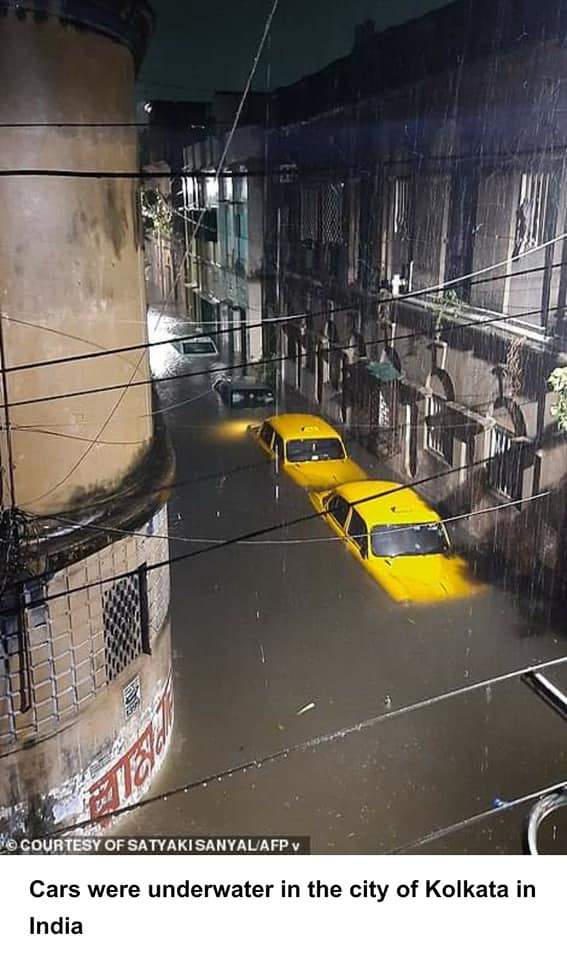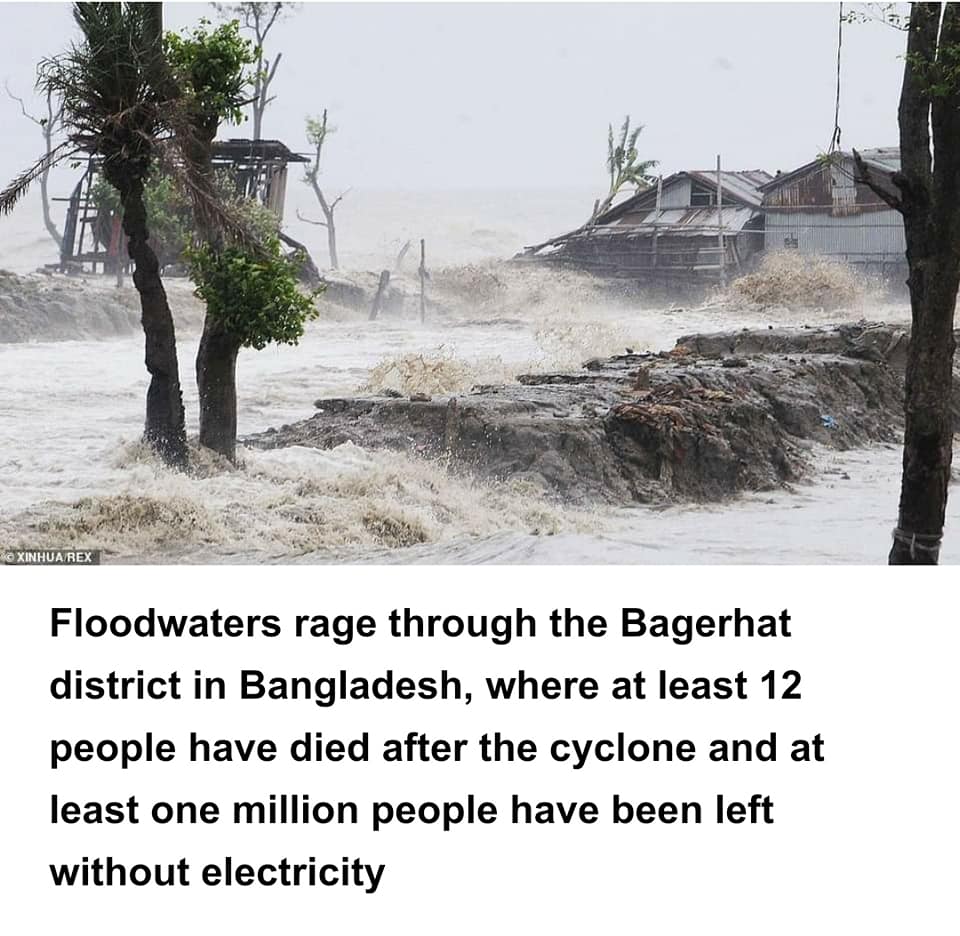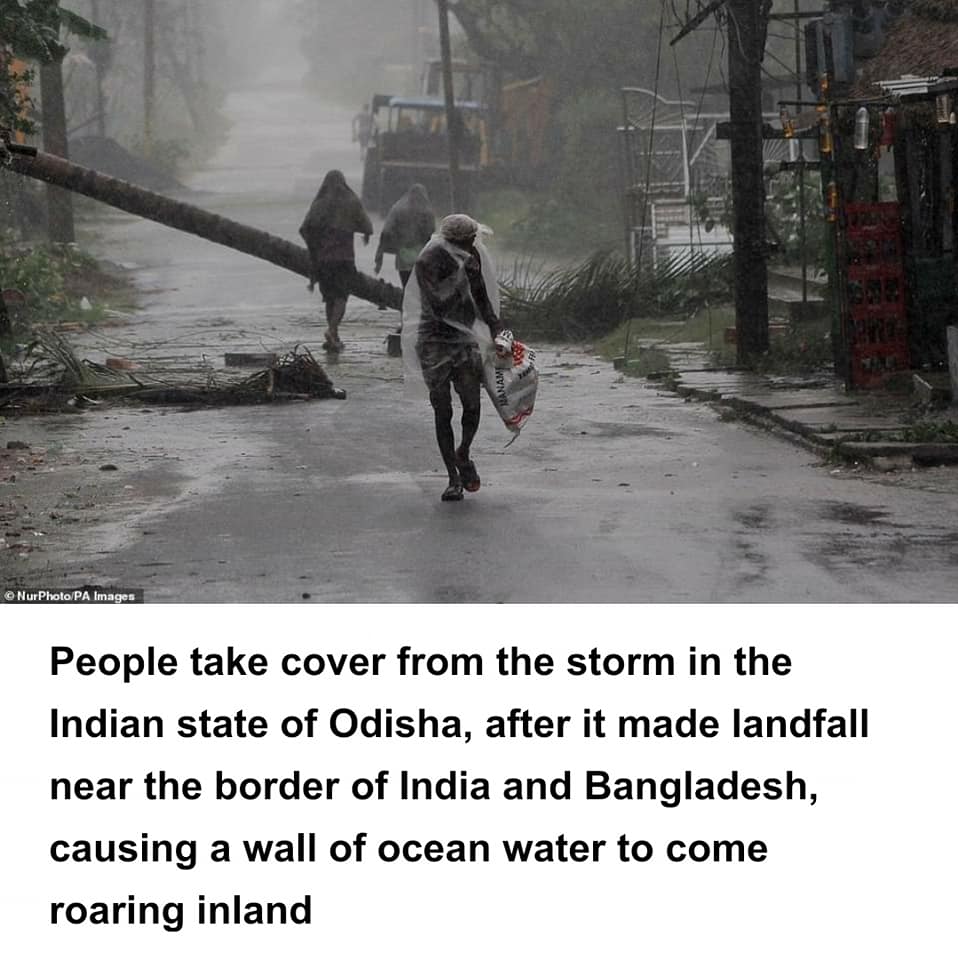SUPER-CYCLONE AMPHAN KILLS 84 PEOPLE, sweeps away homes and leaves millions without power after 118mph winds triggered storm surge in India and Bangladesh
By Afp
May 21, 2020 8:10PM
At least 84 people have died after a ‘super-cyclone’ in India and Bangladesh swept away homes with destructive 118mph winds.
Cyclone Amphan tore up trees, washed away roads and left millions of people without power after triggering a disastrous storm surge on the subcontinent.
The chief minister of India’s West Bengal state said the impact was ‘worse than coronavirus’, adding: ‘I haven’t seen a disaster of this magnitude.’
Mamata Banerjee said 72 people had been killed in India, while Bangladeshi officials earlier said at least another 12 people had died there – with evacuations made harder by the pandemic.
Emergency workers were today picking through the destruction which Amphan left in its wake, including in West Bengal’s capital of Kolkata where 15 people have died.
Officials warned that relief and repair work will be made harder by the coronavirus pandemic, which has already sapped the healthcare system.
Residents awoke to flooded streets with some cars window-deep in water and the airport flooded by the storm surge.
‘Thousands of mud huts have been levelled, trees uprooted, roads washed away and crops destroyed,’ the chief minister said.
The victims in Bangladesh included a five-year-old boy and a 75-year-old man hit by falling trees and an emergency volunteer who drowned.
Officials said they were waiting for reports from the Sundarbans, a UNESCO World Heritage site known for its mangrove forest and endangered Bengal tigers.
‘We still haven’t got the actual picture of the damage,’ forest chief Moyeen Uddin Khan said.
‘We are particularly concerned over some wild animals. They can be washed away during a storm surge in high tide.’
Cyclones are an annual hazard along the Bay of Bengal coast, claiming the lives of hundreds of thousands of people in recent decades.
Despite an increase in their frequency blamed partly on climate change, improved warning systems have enabled authorities to be much better prepared.
However, Amphan was the first ‘super cyclone’ to form over the Bay of Bengal since 1999, and carried winds of up to 118mph when it crashed ashore.
It brought a storm surge – a wall of ocean water that is often one of the main killers in major weather systems – that roared inland.
Anwar Hossain Howlader, an official in the Khulna coastal district of Bangladesh, said 10ft surge had destroyed embankments protecting villages despite locals toiling through the night.
‘It caused massive destruction. Thousands of trees have been uprooted,’ he said.
‘Embankments have broken down at many places, inundating many villages. The damage and destruction of crops and fish farms have been huge.’
At the village of Purba Durgabati in Satkhira district, hundreds of villagers spent the night trying to mend a breach in the embankment that protected several villages from the Kholpetua river.
But the surge unleashed by the cyclone washed away more than a mile of the embankment, which also doubled as a village road.
Sea water inundated some 600 homes and washed away thousands of shrimp and crab farms. ‘My home has gone under water. My shrimp farm is gone. I don’t know how I am going to survive,’ said Omar Faruq, 28.
The cyclone was weakening as it moved northwards through Bangladesh but still unleashed heavy rains and fierce winds in Cox’s Bazar, the district which houses about one million Rohingya refugees from violence in Myanmar.
The last super cyclone in 1999 left nearly 10,000 dead in India’s Odisha state, eight years after a typhoon, tornadoes and flooding killed 139,000 in Bangladesh. In 1970, half a million perished.
More than three million people were evacuated from coastal villages in both countries.
Because of coronavirus, authorities said they used extra shelter space to reduce crowding, while making face masks compulsory and setting aside isolation rooms, but some stayed put.
Sulata Munda, a villager in Bangladesh on the edge of the Sundarbans, said she and fellow villagers decided not to go to a shelter. ‘We fear the cyclone but we also fear the coronavirus,’ the mother of four said.




